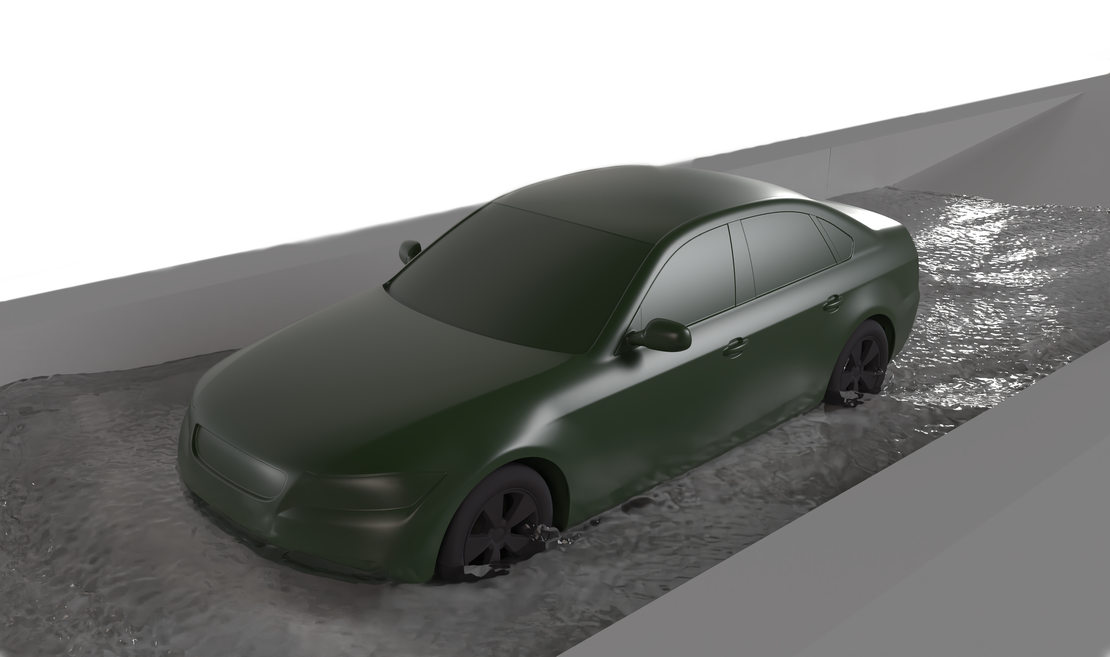在汽车工业中,涉渡指的是车辆以低速行驶穿过较深水域,如渡河或在洪水泛滥的道路上行驶。 车辆能安全涉渡的深度至关重要,其测量标准是轮胎接触点与发动机进气系统之间的距离。 这一数据的测量至关重要,能够防止水进入发动机,并在进行此类操作时有效保护发动机免受损害。
案例描述
本案例将对上述涉水场景进行仿真。 模拟过程中,车辆将行驶于深度为30厘米的水道中。 该水道的具体尺寸已在下图中详细展示。 本次仿真设置两种车速:2 m/s(约7 km/h)及3.33 m/s(12 km/h)。
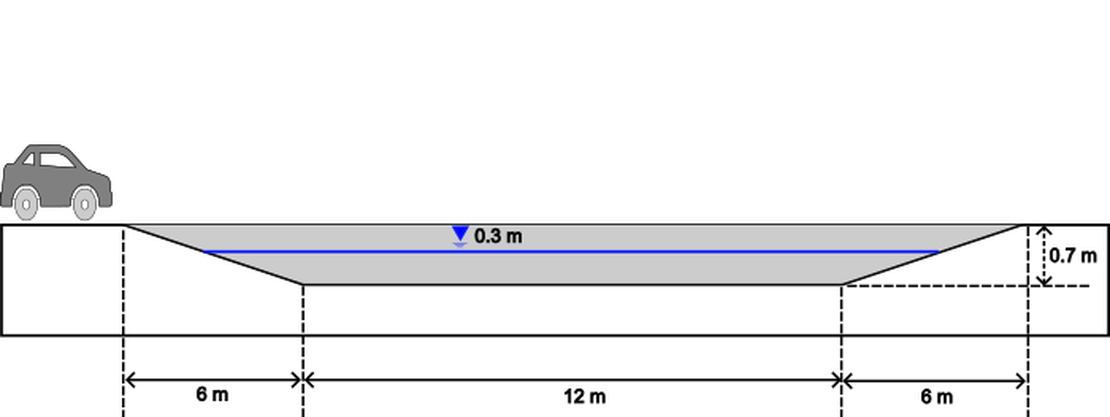
模型设计
案例中的水道几何结构是基于上述草图,通过shonMesh生成的表面网格。而车辆的几何结构采用的是DrivAer模型。该模型由德国慕尼黑工业大学空气动力学与流体机械研究所开发。 作为一种通用化表示形式,旨在填补过度简化的模型(如Ahmed车身)和复杂量产车之间的技术空白。 对于本次仿真,DrivAer模型采用了以下配置:
- 三厢轿车的顶部设计
- 详细底盘结构
- 后视镜
- 车轮
如下图所示:可以看到 STL 文件以及水道的网格。
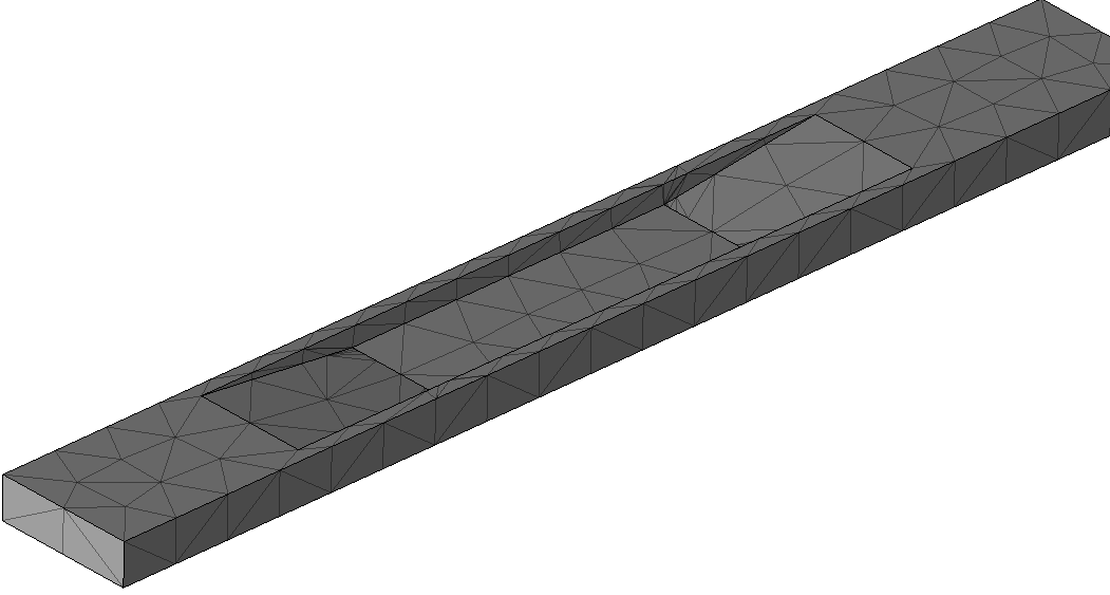
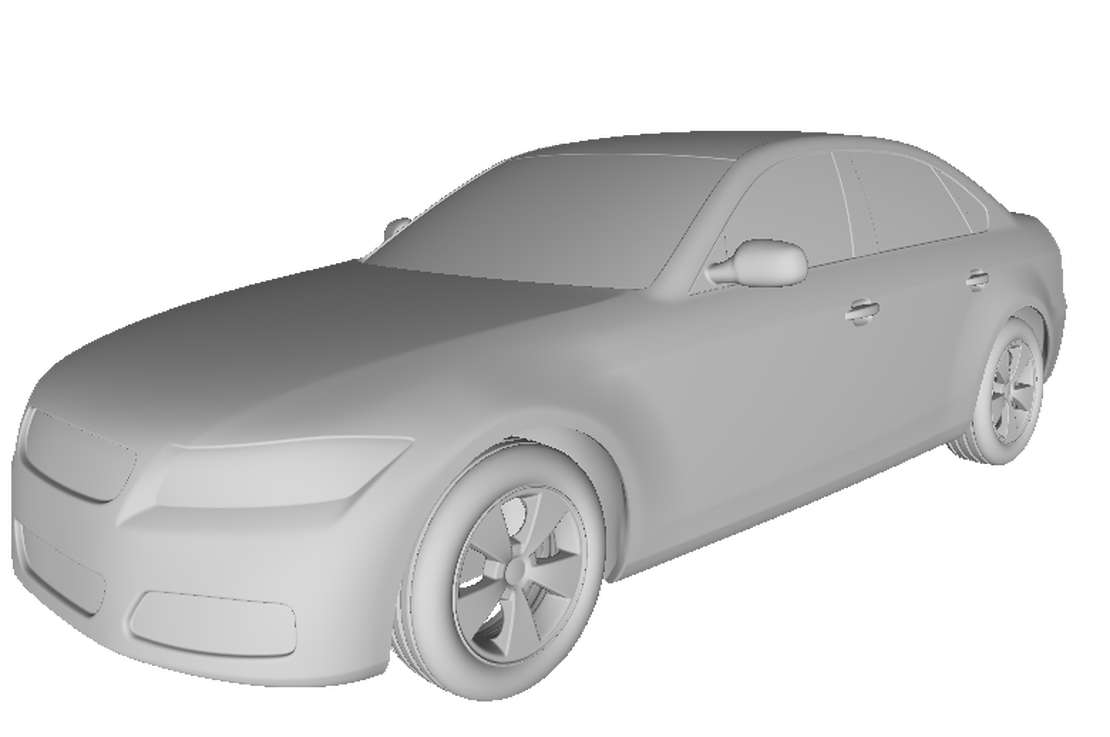
案例设置
在第一次仿真中,汽车于1秒后开始移动,从0加速至2 m/s,耗时2.5秒,随后以该速度匀速行驶15秒,并在第18秒停止。 因此,总计算时间为18秒,代表汽车完全通过整个水道所需的时间。 在第二次仿真中,由于车速加快至3.33 m/s,车辆仅使用12.5秒即可通过水道,所以整体需要仿真的物理时间更短。 精确的速度曲线可参考下图所示的图表。
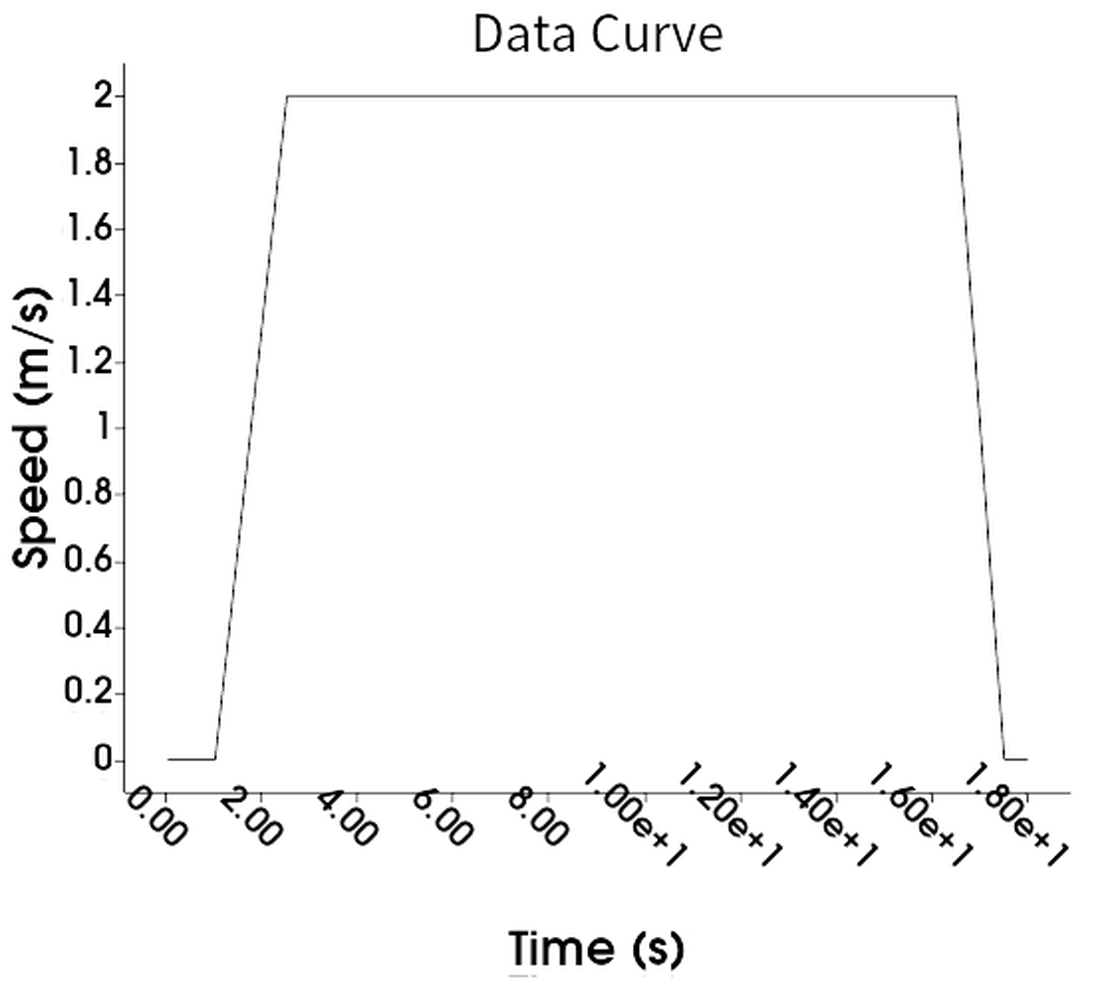
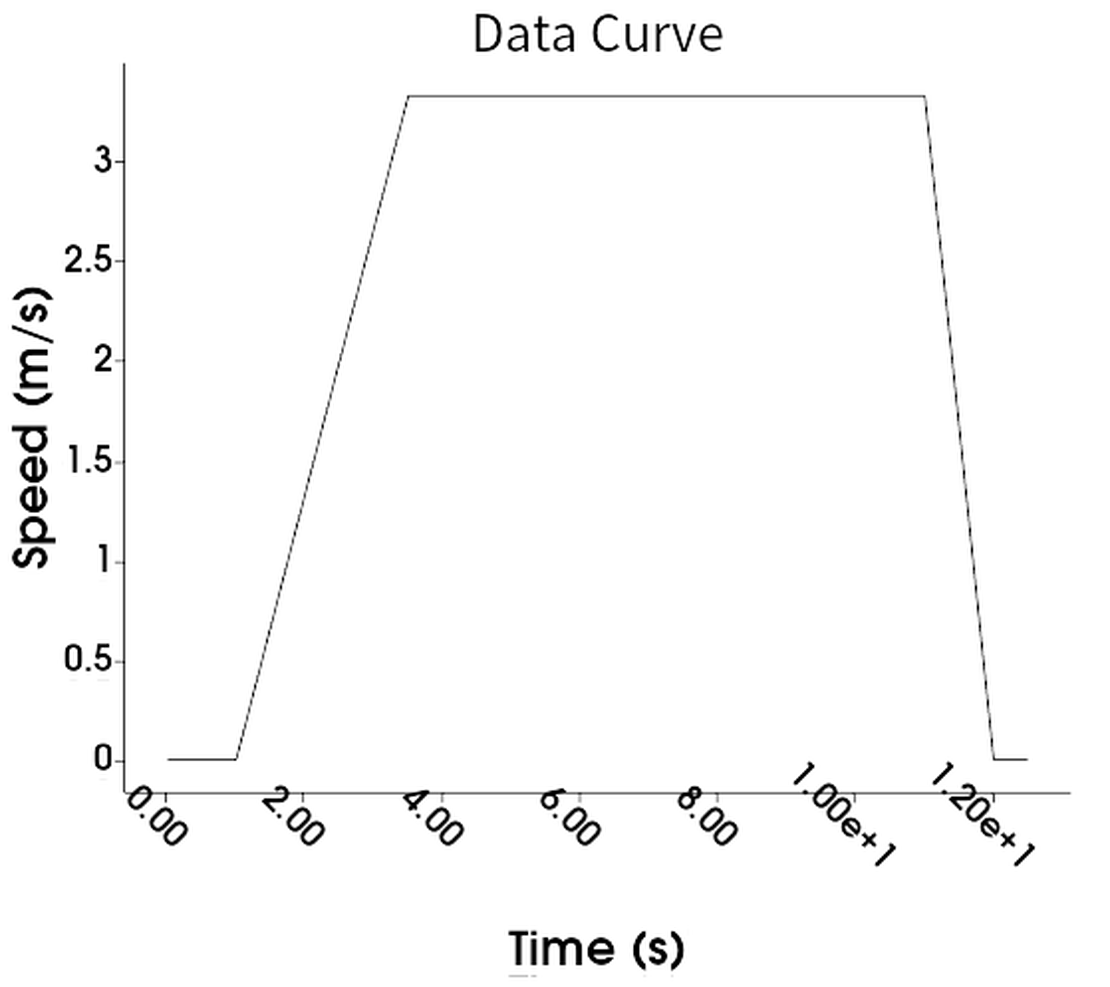
在两个仿真中,液体区域的设置保持一致:水道内总共有 15.943 m3的液体,相当于 30 厘米的高度。 在此仿真中,使用了半径为 1.26 cm的流体粒子,共生成了 100 万个粒子。
此案例采用了多种采样方法,包括:
- 车中心线上的采样点
- 车轮周围的采样区域
- 水道内的采样线
这些采样如下图所示。
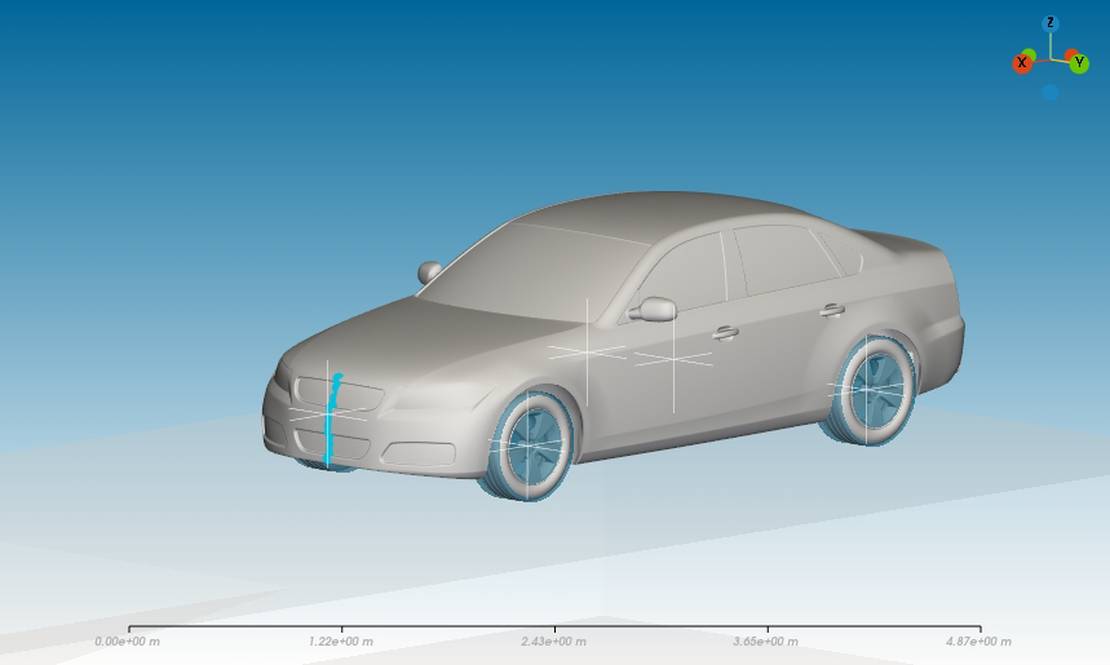
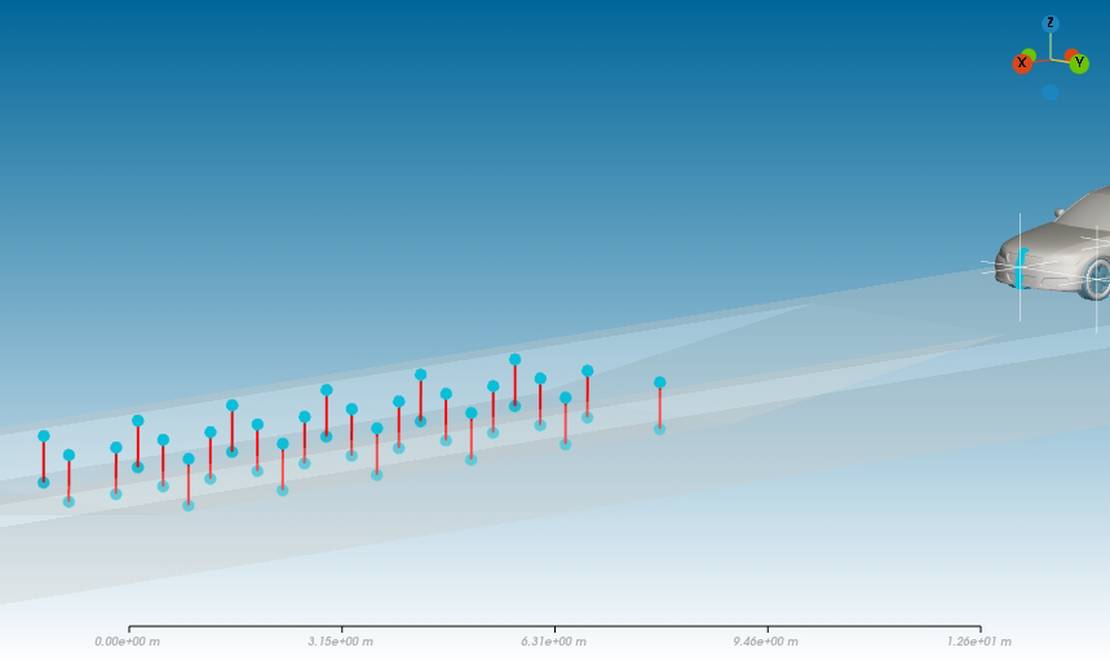
仿真结果
仿真的总体情况展示在下方视频中。 上一行显示的是慢速行车结果,下一行则显示是快速行车结果。 两个俯视图 (右侧的视频) 清晰地展示了前方波浪扩散的差异:浅水中的表面波速度可以用以下公式近似计算
$v_{wave} =\sqrt{g h}$
其中g是重力加速度,而h则是水的深度。
在这段视频中,对于较慢的汽车,在坡道上(水较浅的地方),波速小于车速;因此,波峰始终位于汽车前方。 而在水道底部(水更深的地方),波速略大于车速,因此波会超过汽车。 在第二个仿真中,汽车的速度始终快于波的传播速度,因此波峰始终位于汽车前方。
以下图片展示了汽车上的覆盖率。 此处,shonDy 的内置时间平均滤波器被用于可视化当前值(在这种情况下为覆盖率),以及特定时间段内的平均值。 在所示的图表中,覆盖率是基于 0.25 秒的时间段进行平均计算的,以便更清晰地了解水是如何打湿汽车的。
同样,上一行显示的是慢速行车结果,下一行则显示是快速行车结果。 通过比较两种速度,可以看出覆盖率分布的区别。 对于行驶速度更快的车辆,它需要应对更高的水波,这导致几乎整个车头部分都受到水的覆盖。 这样可能会导致水进入发动机舱,从而堵塞空气进气口并引发发动机故障。 另一方面,对于行驶速度较慢的车辆,水仅覆盖车头的下半部分,这意味着发动机熄火的风险要低得多。 侧面视图也显示了差异:在行驶速度较快的车辆中,水位在汽车前门附近也会更高。
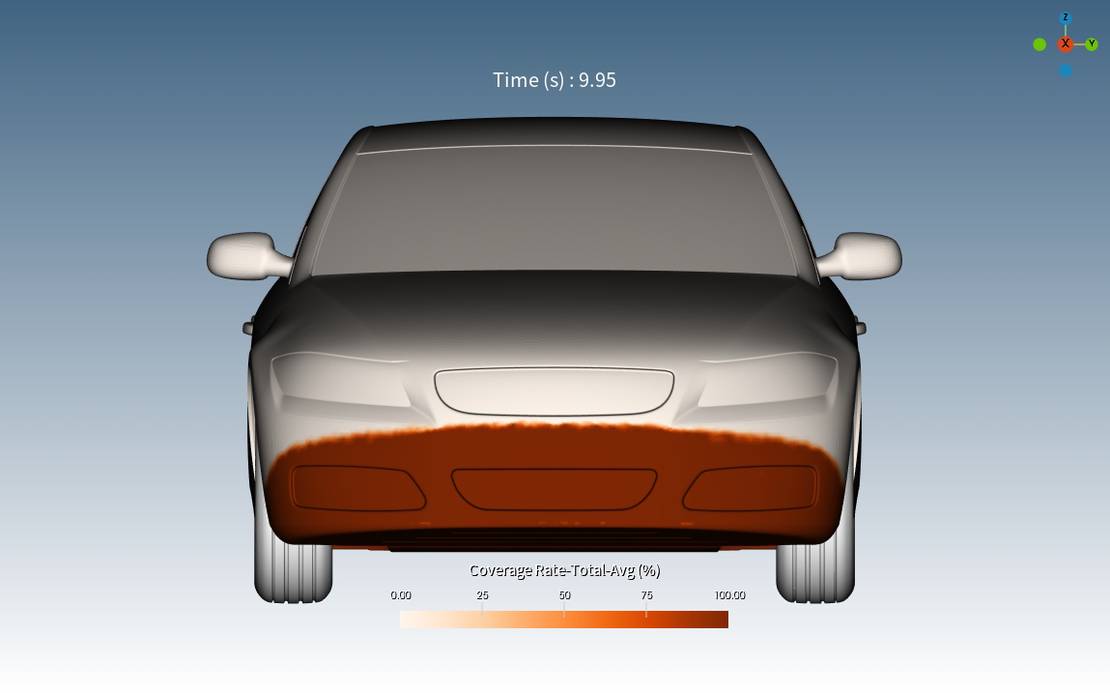
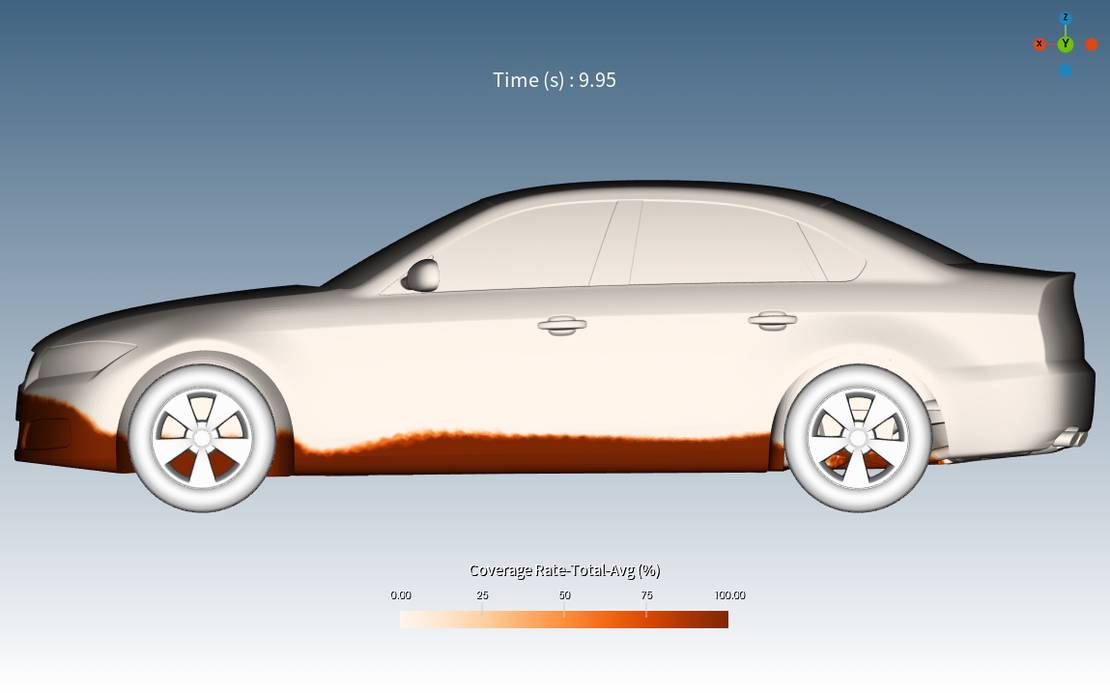
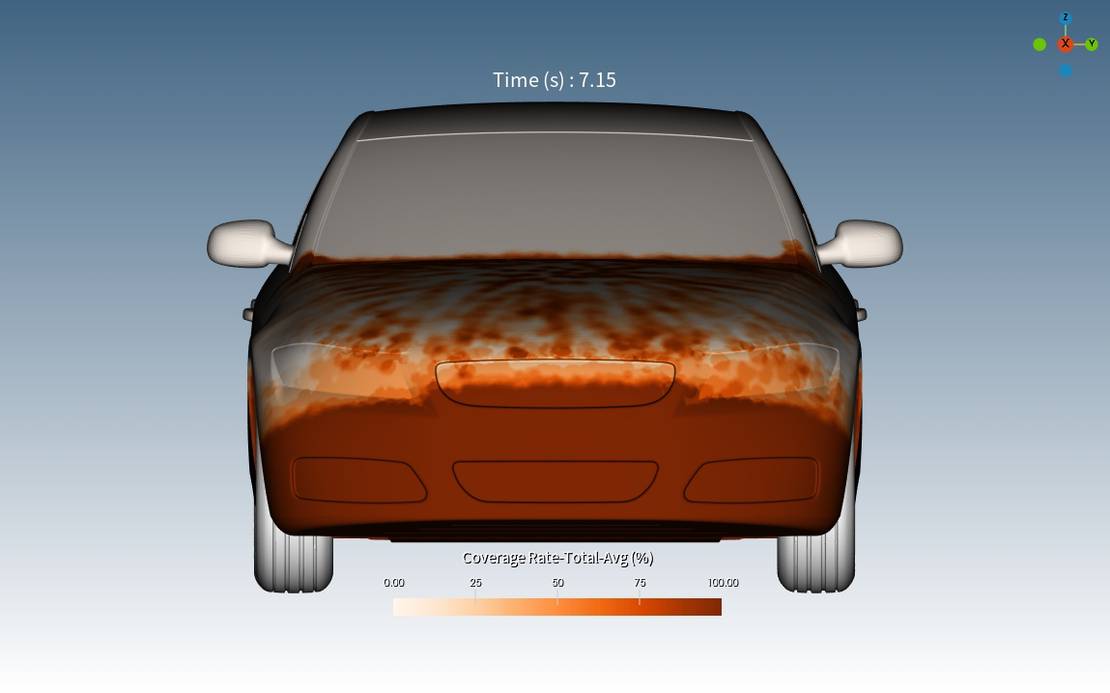
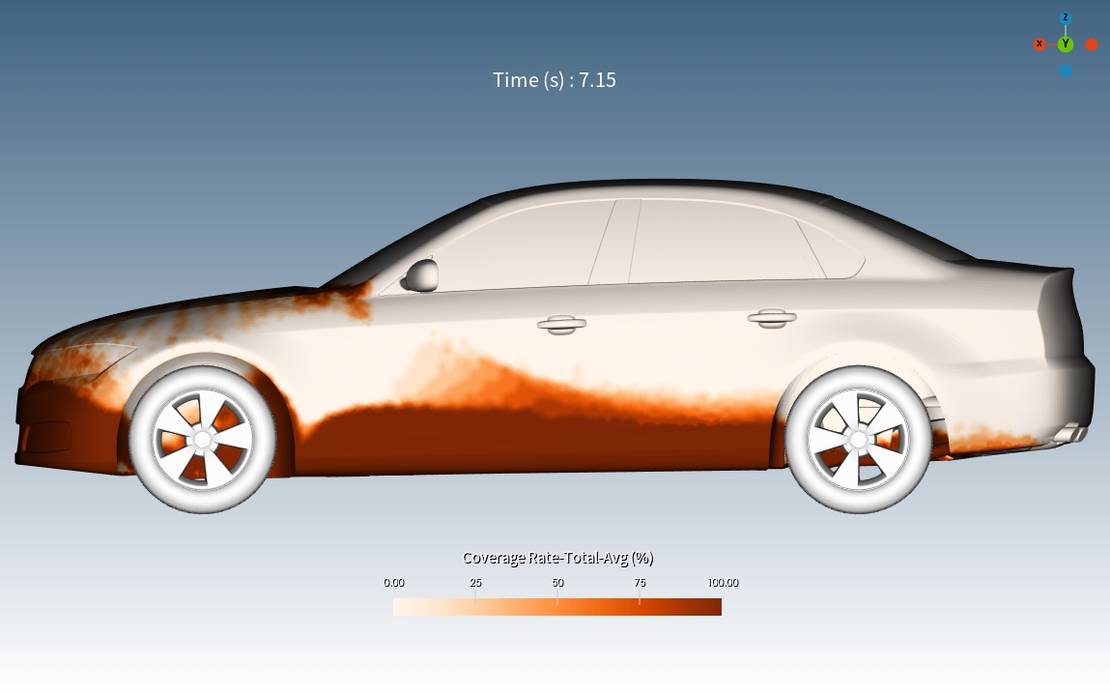
如下方的图片所示,采样点位于车头中央线上,记录随时间变化的压力。 为了提高可比性,图表中未显示压力随时间的变化,而是显示了压力在汽车质心位置(沿x轴方向)上的分布情况。 为了便于定位,图中沿x轴绘制了水道的轮廓。
总体来说,可以看到汽车最低点承受的压力最大,而随着位置升高,压力逐渐减小。 此外,速度越快,车辆整体上会经受的压力越大。
在高速的情况下,压力图显示初始冲击会产生最大的压力。 这种冲击力足以将水从车辆前方推开,形成显著的初始水波。 大约在12米处,汽车追上这个水波,其前端再次与水面接触。
相比在较低速度下,压力峰值要小得多。 由于车辆速度较低,进入水中时产生的主要水波会移动到车前方,导致较少的水聚集在车前。 因此,较慢车辆的压力图显示,在车辆完全进入水道后,7号点大部分时间都与水面没有接触。
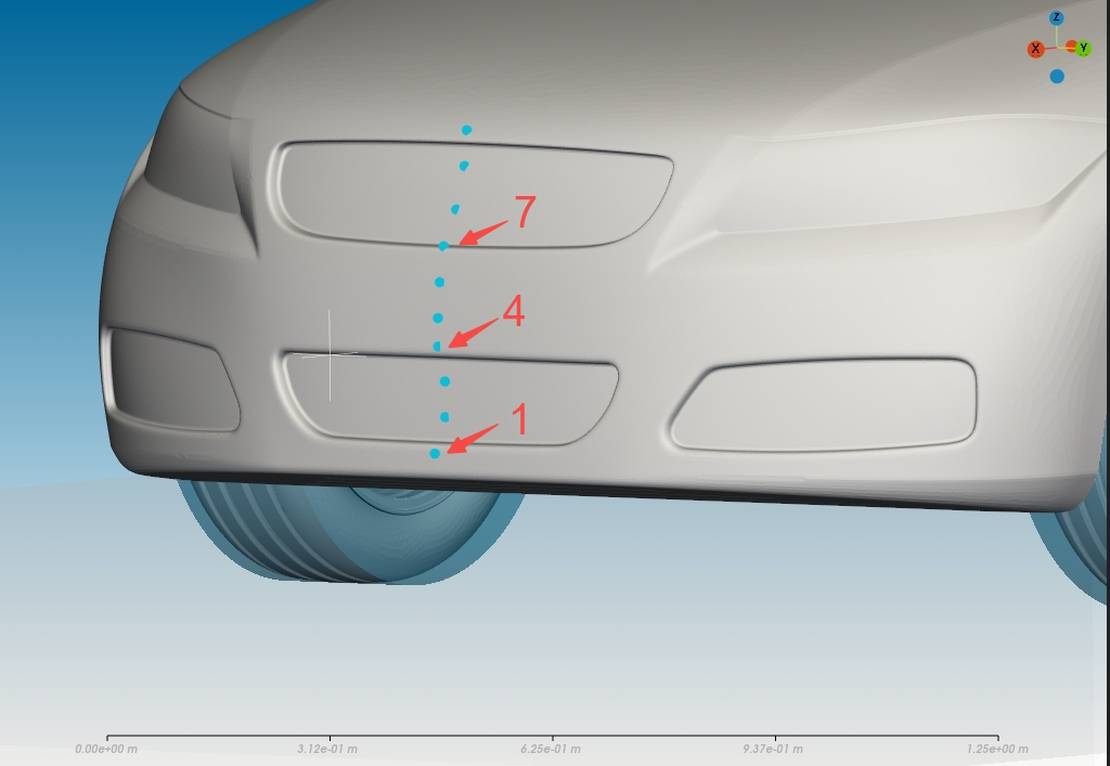
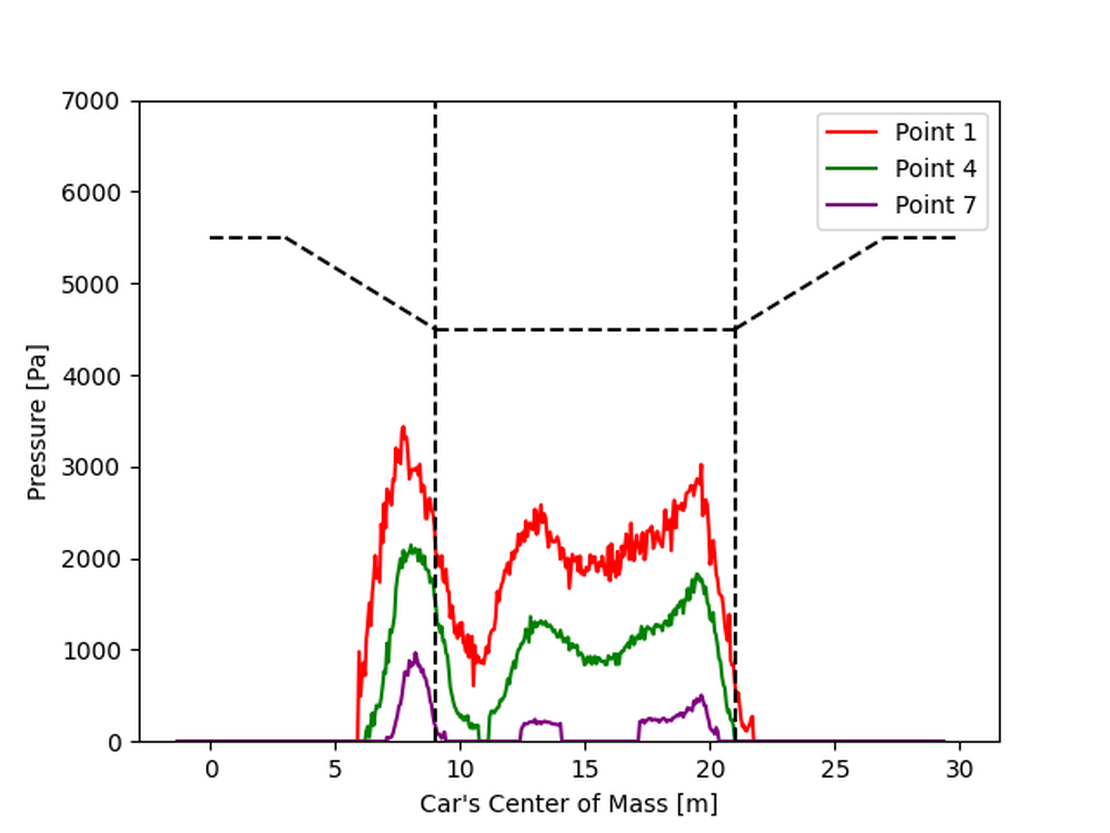
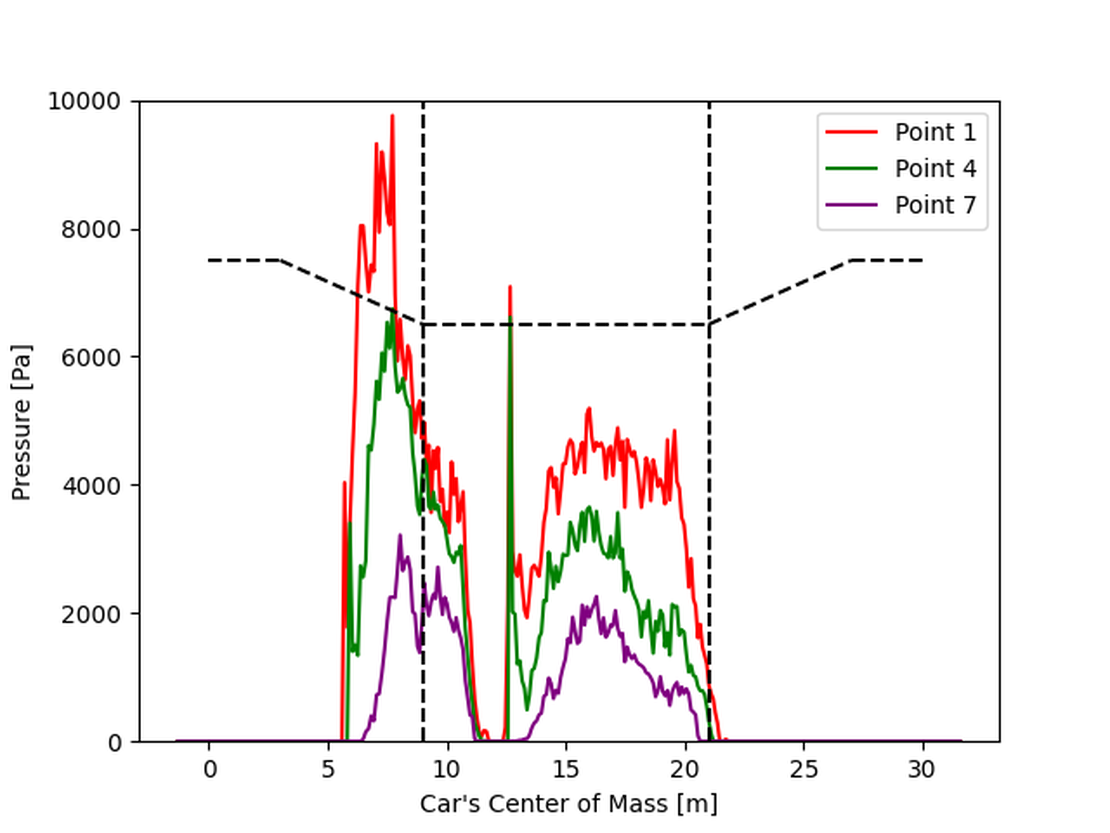
下面这些图展示了体积采样是如何使用的。 在右侧图片中,我们可以看到左轮胎处体积采样的位置。 在图中,显示了车体所在位置的流体体积。 总体来说,前轮需要应对比后轮多得多的水量。 这与上面提到的覆盖率是一致的。 从这张图可以看出,水在车辆前方积聚,而在积水之后,车辆的其他部分则经受了相对较低的水位。
当我们比较高速和低速仿真时,我们观察到了类似的情况:在更高的速度下,前后轮都需要应对更多的水量。
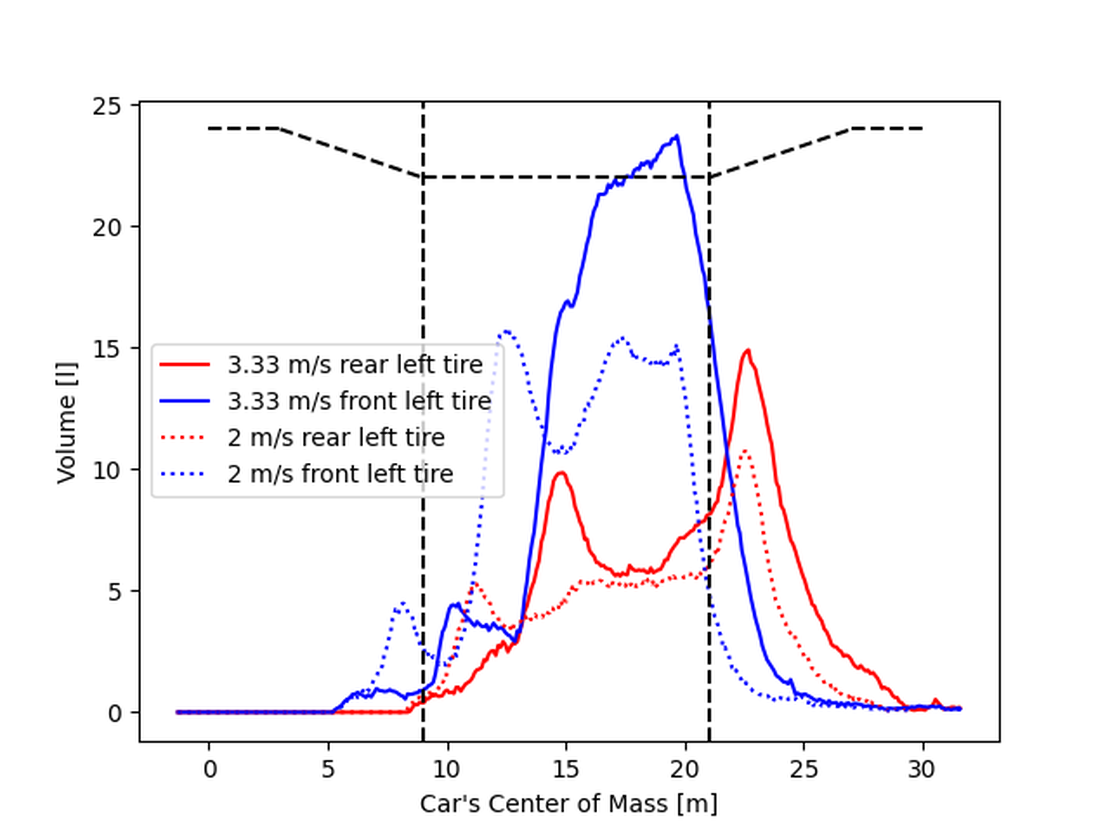
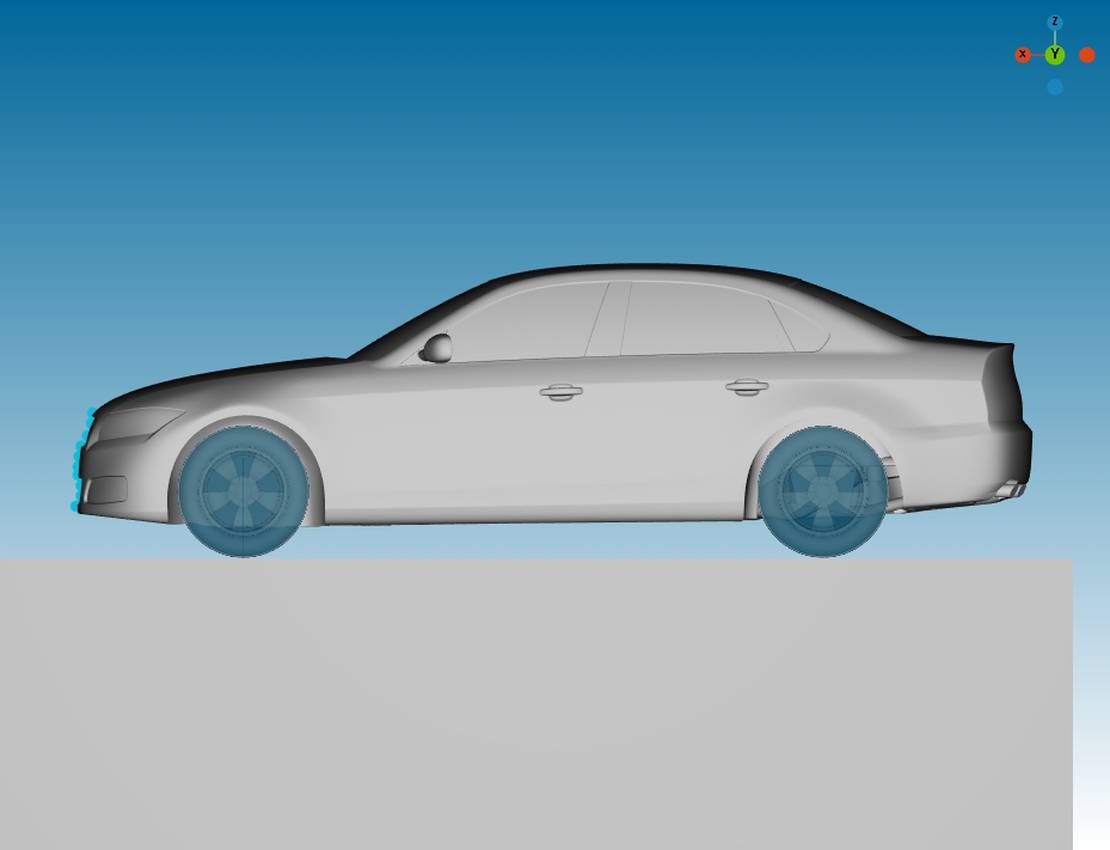
仿真统计概要
| 组件 | 描述 |
|---|---|
| 操作系统 | Windows |
| CPU | 12th Gen Intel(R) Core i9-12900K |
| RAM | 64 GB |
| GPU | NVIDIA GeForce RTX 3090 |
Simulation with Version 2.7
| 参数 | Case 2m/s | Case 3.33 m/s |
|---|---|---|
| 仿真时间 | 18 秒 | 12.5 秒 |
| 粒子数量 | 约100万 | 约100万 |
| 粒子半径 | 1.26 cm | 1.26 cm |
| 计算时间 | 46 分钟 | 44 分钟 |
In Contrast Simulation with Version 2.6
| 参数 | Case 2m/s | Case 3.33 m/s |
|---|---|---|
| 仿真时间 | 18 秒 | 12.5 秒 |
| 粒子数量 | 约100 万 | 约100 万 |
| 粒子半径 | 1.26 cm | 1.26 cm |
| 计算时间 | 19.4 小时 | 6.8 小时 |
